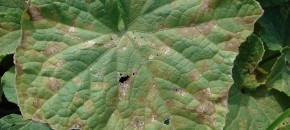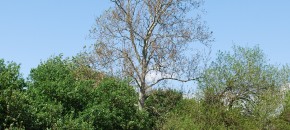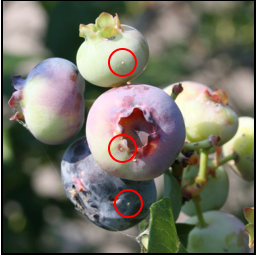by Margaret McGrath, Beth Gugino, Kate Everts, Steve Rideout, Nathan Kleczewski, and Andy Wyenandt 2013 Fungicide Resistance Management Table for Cucurbit Downy and Powdery Mildew Control Producing a high-quality cucurbit crop necessitates effectively managing downy mildew. This foliar disease is common in the mid-Atlantic and northeast because the pathogen produces a large quantity of asexual […]
Continue reading...Vegetable Briefs and Disease of the Week

Cucurbit downy mildew was reported as far north in Wayne and Nash Counties in North Carolina and Texas this past week. All cucurbit growers are urged to begin scouting. To track cucurbit downy mildew in the US please visit http://cdm.ipmpipe.org/ No late blight has been reported in the region to date and has only been […]
Continue reading...Tomato Disease Forecasting Report 6-7-13
6-7-13 Tomato Report – Click to Download Disease severity values (DSVs) for early blight, septoria leaf spot, and tomato anthracnose development are determined daily based on leaf wetness (due to rainfall, dew) and air temperature. On a daily basis DSV values can range from 0 to 4 where 0 = no chance for disease development […]
Continue reading...Potato Disease Forecasting Report 6-7-13
Potato Disease Forecasting Report 6-7-13 – Click to Download We will be tracking DSVs for Late blight development and calculating P-days for initiating the first early blight fungicide application. The first late blight fungicide application is recommended once 18 DSVs accumulate from green row. Green row typically occurs around the first week in May in southern […]
Continue reading...The Emperor has No Clothes

Have you noticed in the landscape that the sycamores, and to a lesser degree, the plane trees are devoid of leaves? Anthracnose of Platanus species is a well known disease in our area. The disease causes leaf and shoot blight, twig cankers, and branch dieback, and has been particularly severe this spring.
Continue reading...Blueberry Pest in Detail: Putnam Scale

Tape traps monitored on Tuesday, June 4 showed the start of crawler activity in the Hammonton area. Life History Scales feed on plant sap, decreasing plant vigor and fruit yield. Adult scales are protected from insecticide sprays by a waxy covering. These insects are common in older canes when not removed, and located mostly under […]
Continue reading...